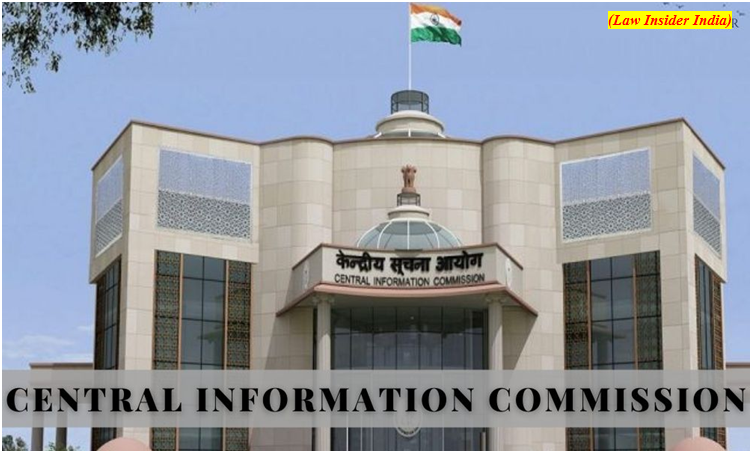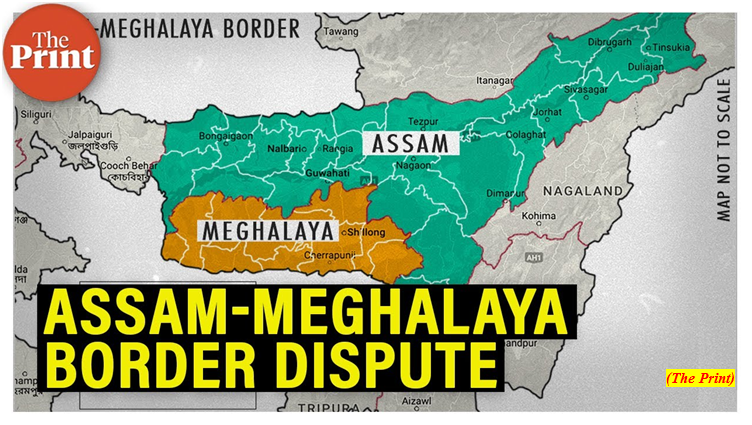India is losing its cherished right to know (GS Paper 2, Polity and Governance)

Context:
- The most vital mandate of the Central Information Commission, the apex body under India’s transparency regime, is to decide whether certain information sought by a citizen ought to be disclosed or not. Its primary duty is to decide the disclosure or the non-disclosure of information.
- But the commission has seemingly relinquished this primary duty in cases of larger public importance.
RTI filing:
- Citizens can file applications under the Right to Information Act with any public body and are guaranteed a reply from the public information officer of that public body within 30 days.
- In case of a no reply or dissatisfaction with the response, the citizen can file an appeal at the departmental level and then a second and final appeal with the Information Commission.
- Each State has its own State Information Commission to deal with second appeals concerning State bodies. At the centre, it is the Central Information Commission (CIC).
Central Information Commission (CIC):
- Until the 2019 amendment to the RTI Act, Information Commissioners (ICs) appointed to the CIC were equal in status to the Chief Election Commissioner, and that of a Supreme Court judge.
- They had a five-year fixed term and terms of service. After the amendments of 2019, the Centre gave itself powers to change and decide these terms whenever it wished, thereby striking at the independence of the commission and those who man it.
From transparency to hurdles:
- The CIC was a functioning institution until four years ago.
- It had passed orders seeking transparency in many cases of public importance; from boldly pronouncing that political parties were under the RTI Act’s ambit, and hence accountable to the public, to ordering disclosure of the current Prime Minister’s education qualifications and the Reserve Bank of India’s list of willful defaulters of loans. The commission acted as a strong proponent of transparency in public life.
- Now, the CIC has become more like a walking dead institution, where records will show that not a single order for disclosure has been forthcoming in matters of public importance.
New jurisprudence:
- The present set of Information Commissioners have together adopted a new jurisprudence that has created additional hurdles in a citizen’s quest for accountability.
- But in matters of public importance, such as cases seeking disclosure of files related to the national lockdown during COVID-19, or the case seeking disclosure of data pertaining to phone tapping orders passed by the Home Ministry, the Commission has adopted a new way of delegating its mandate to the Ministry before it (the very same party that stands accused of prohibiting transparency).
- In most cases, the Ministries reiterate their earlier stand of non-disclosure, most often under vague grounds of national interest.
- More worryingly, after these public authorities pass fresh orders, which are usually a reiteration of their earlier stand against disclosure, the CIC refuses to accept any further challenge to such orders, therefore, refusing to do its duty of deciding the cases.
- One of the cardinal rules of natural justice is that no one should be a judge in their own cause. However, the commission now allows, or rather wants, the very Ministry that stands accused of violating the RTI Act to act as the judge in their own cause and decide whether a disclosure is necessary.
RTI by Internet Freedom Foundation:
- A similar situation arose when the CIC refused to hear the Internet Freedom Foundation’s challenge to the fresh non-disclosure order passed by the Home Ministry in the phone tapping case.
- The organisation had the resources to challenge this before the Delhi High Court and enforce their right to a fair hearing before the Commission. But many do not, in a country where a small percentage of the populace has the access and the resources to justice redress.
Conclusion:
- It is getting more difficult, if not impossible, to extract any information of importance under the present dispensation.
- Bureaucrats reject RTIs with glee with no fear of facing penal provisions outlined in Section 20 of the RTI Act, knowing fully well that they have a free hand under the Information Commissioners.
- To even think of the possibility of the very institution mandated to guard India’s transparency regime to be responsible for its downfall should set alarm bells ringing as far as civil society and citizens who care and dare to question are concerned.
Way Forward:
- Dark clouds surround India’s transparency regime.
- Citizens have to mount intense pressure on authorities to act and appoint commissioners of integrity. Lawyers have to help willing citizens take matters to court and seek justice. If there is a failure to do so, India will lose its cherished right to know.
Assam-Meghalaya border dispute
(GS Paper 2, Inter-State Dispute)
Why in news?
- Recently, tension gripped the Assam-Meghalaya border areas after six people were killed when police intercepted a truck that was allegedly smuggling timber.
Border dispute between Assam& Meghalaya:
- Assam and Meghalaya share an 885-km border.
- In 1970, Meghalaya was carved out of Assam as an autonomous state. In 1972, Meghalaya became a full-fledged state following the Assam Reorganisation (Meghalaya) Act of 1969.
- This was the beginning of the border problem as the Meghalaya government found the Act unacceptable.
- As many as 12 land dispute points, along the border of these two states, have been a bone of contention. These include Langpih, Upper Tarabari, Gazang reserve forest, Hahim, Borduar, Boklapara, Nongwah, Matamur, Khanapara-Pilangkata, Deshdemoreah Block I and Block II, Khanduli and Retacherra.
- Six of these areas have found some type of resolution in recent times after a memorandum of understanding (MoU) was signed between the two states.
Langpih:
- Among the 12 areas, Langpih in the West Garo Hills bordering the Kamrup district of Assam is a major flashpoint.
- Langpih was part of the Kamrup district during the British colonial period, but post-Independence, it became part of the Garo Hills and Meghalaya.
- Meghalaya claims that the border problem in Langpih has been created by Assam, which has often set up police posts there.
- In March 2020, the Assam Police allegedly tried to set up a border outpost in Umwali in Langpih, and the local Khasi population protested against it.
Resolving the issue:
- In 1983, a joint official committee was formed to address the border issues. The panel recommended that the Survey of India should re-delineate the border, teaming up with both the states.
- An independent panel, spearheaded by Justice YV Chandrachud, was set up in 1985. Meghalaya rubbished the report. In 1991, about 100 km of the border was demarcated with the help of the Survey of India, but Meghalaya cried foul.
- In 2011, the Meghalaya Assembly passed a resolution for intervention of the Centre and the establishment of a boundary commission. The Centre asked the two governments to appoint nodal officers to discuss the dispute. In 2019, Meghalaya urged the Supreme Court to direct the Centre to resolve the dispute but the petition was turned down.
- On January 29, 2022, Assam and Meghalaya signed a draft resolution. It was the first step towards resolving a 50-year-old dispute.

MoU in March 2022:
- On March 29, a historic MoU was signed between Assam Chief Minister Himanta Biswa Sarma and his Meghalaya counterpart Conrad K Sangma in the presence of Home Minister in New Delhi.
- The agreement sought closure in six disputed sectors that were taken up for resolution in the first phase. The six disputed sectors were Tarabari (4.69 sq km), Gizang (13.53 sq km), Hahim (3.51 sq km), Boklapara (1.57 sq km), Khanapara-Pilangkata (2.29 sq km) and Ratacherra (11.20 sq km) under the Kamrup, Kamrup (Metro), and Cachar districts of Assam and the West Khasi Hills, Ri-Bhoi and East Jaintia Hills districts of Meghalaya.
- The remaining six areas include villages in disputed blocks 1 and 2 transferred from the then United Khasi and Jaintia districts to Assam’s Karbi Anglong district for administrative convenience in the 1950s.
Second phase of border talks:
- In August, the second phase of border talks was held with the two states deciding to form three regional committees to resolve issues regarding the remaining six disputed areas.
- Five principles are considered while resolving the border disputes: historical facts, ethnicity, administrative convenience, willingness and sentiments of the people concerned and the contiguity of the land, preferably with natural boundaries such as rivers, streams, and rocks.
‘Ambition on Melting Ice on Sea-level Rise and Mountain Water Resources’ group
(GS Paper 3, Environment)
Why in news?
- The melting of the cryosphere, areas on the planet with frozen water due to climate change, is a global threat whose impact will not be restricted to mountain and polar countries, according to the newly formed ‘Ambition on Melting Ice on Sea-level Rise and Mountain Water Resources’ group.
Background:
- The countries that signed the declaration November 16, 2022 at the 27th Conference of Parties (COP27) to the United Nations Framework Convention on Climate Change concluded in Egypt include those in the mountains as well as low-lying areas.
- They aim to promote awareness on the effect of cryosphere loss among global leaders and citizens.

Key Highlights:
- The group comprising 18 governments brings special attention to the role of cryosphereloss in global sea-level rise. Elevated sea-levels can erase entire geographies off the world map, endanger marine and coastal ecosystems and cause immense economic losses.
- Melting cryosphere and thermal expansion of sea-water due to global warming were always seen as the major contributors to sea-level rise by policymakers.
- The declaration of the group trains focus on the role of cryosphere loss in particular in causing this crisis that threatens coastal communities, island nations and low-lying regions with obliteration.
Impact in recent years:
- Melting of glaciers, ice sheets, river and lake ice as well as permafrost accelerated over the last couple of years, propelled by global warming. This year was annus horribilis for many frozen regions of the world, with September breaking multiple records.
- Switzerland lost 6 per cent of the glacier ice volume from 2021-2022, according to the Provisional State of the Global Climate in 2022 report by the World Meteorological Organization (WMO).
- The Greenland ice sheet lost mass in 2022 for the 26th year in a row. In September, it rained on the ice sheet instead of snowing for the very first time.
- On February 25, 2022, the volume of Antarctic sea ice was at the lowest on record.
- Arctic sea-ice extent was below the long-term average for most of the year.
- This is despite 2022 being the third year in a row the Earth is experiencing La Nina, the phase of the El Nino-Southern Oscillation global climate pattern that is associated with cooling of sea surfaces.
About ‘Ambition on Melting Ice on Sea-level Rise and Mountain Water Resources’ group:
- The founding governments of the group include Chile (co-chair), Iceland (co-chair), Peru, Czech Republic, Nepal, Finland, Senegal, Kyrgyz Republic, Samoa, Georgia, Switzerland, New Zealand, Monaco, Vanuatu, Sweden, Tanzania, Liberia, Norway and Mexico.
Way Forward:
- Limiting global warming to 1.5 degrees Celsius is the best solution to avert this crisis. But the global temperature is already 1.15°C above pre-industrial (1850-1900) levels.
- Urgently and rapidly reducing global carbon dioxide and other greenhouse gas emissions from every sector is the only way to arrest warming.
- They called for global targets to decrease emissions by 50 per cent by 2030 from 2019 levels, through carbon-neutral investments and economic development.




